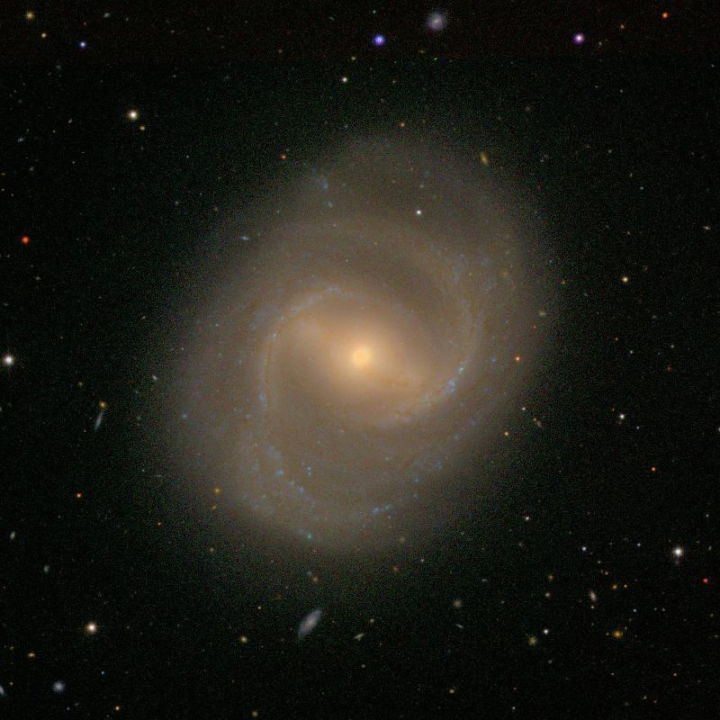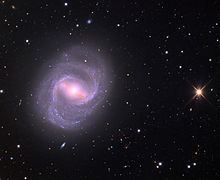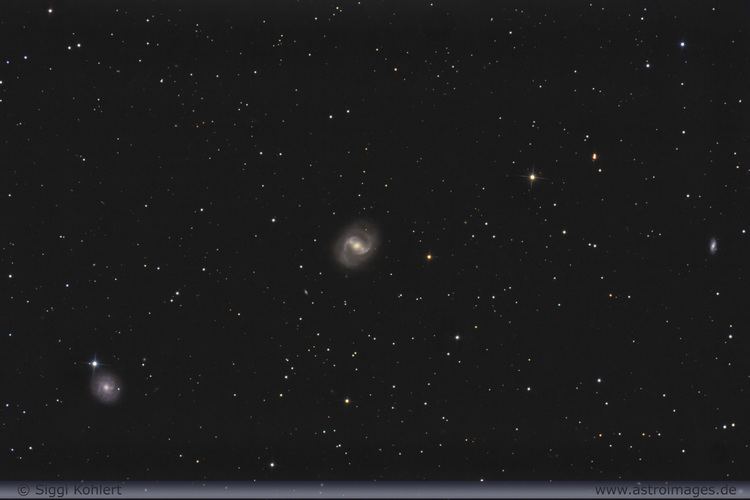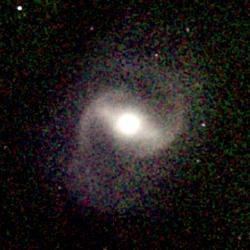Right ascension 12 35 26.4 Redshift 486 ± 4 km/s Apparent size (V) 5′.4 × 4′.3 | Declination +14° 29′ 47″ Type SBb(rs) Magnitude 11 Apparent magnitude (V) 11 | |
Distance 63 ± 16 Mly (19 ± 5 Mpc) Similar Messier 93, Messier 88, Messier 90, Messier 98, Messier 99 | ||
Messier 91 (also known as NGC 4548 or M91) is a barred spiral galaxy located in the Coma Berenices constellation and is part of the Virgo Cluster of galaxies. M91 is about 63 million light-years away from the earth. It was the last of a group of eight nebulae discovered by Charles Messier in 1781.
Contents

Originally M91 was a missing Messier object in the catalogue as the result a bookkeeping mistake by Messier. It was not until 1969 that amateur astronomer William C. Williams realized that M91 was NGC 4548, which was documented by William Herschel in 1784 (according to other sources, however, the nearby spiral galaxy NGC 4571 was also considered as a candidate for Messier 91 by him.)
Objetos messier 91 al 110
Observation history

Messier 91 was discovered on the night of March 18, 1781, Charles Messier described it as Nebula without stars, fainter than M90. Messier mistakenly logged its position from Messier 58, where in fact it should have been Messier 89. William Herschel observed the same galaxy on April 8, 1784.

In 1969 Williams solved the missing Messier object by measuring its right ascension and declination relative to those of the nearby galaxy M89 (there are no suitable reference stars in the vicinity). Williams applied the observed differences of M91 with M58, a 9th-magnitude galaxy which Messier recorded in 1778. The calculation reproduces the Messier position to 0.1' in right ascension and 1' in declination.
Features

The inclusion of Messier 91 in the Virgo Cluster of Galaxies was confirmed in 1997 by a calculation of its distance as 52 +/- 6 million light years from observing Cepheid variables.

M91’s bar is very conspicuous where it lies at an angle of 65/245 degrees when being measured from the North direction to the East.
There is a considerable peculiar velocity toward us through the Virgo cluster of about 700 km/s while the cluster's recession velocity is about 1100 km/s, this gives an observed recessional velocity of only about 400 km/s. Another source gives its RV as 803 km/s.
Messier 91 is also classified as an anemic galaxy -i.e., a spiral galaxy with low star formation and content of gas compared with other galaxies of its type-.
